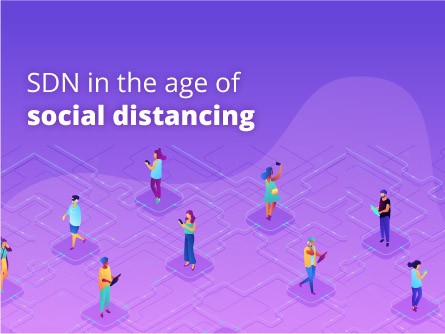We’re living in such strange times now that the term ‘social distancing’ has become the new buzzword around the world.
In places where people are allowed to leave home for quick grocery and other errands, they are expected to maintain a safety bubble of a 1 to 2m radius. ‘Shelter in place’ or ‘stay home’ mandates mean that a majority of the populace cannot leave home to do anything.
For them, the only lifeline for keeping some semblance of normality in their daily routine is the internet.
On a typical lockdown day, the suddenly-redistributed workforce will work from home via their home internet to access company email, engage in text chats and video conferencing, or collaborate via digital teleconferencing tools.
In-between, they can order food and drink online, access movies and music using Over-The-Top (OTT) platforms or make use of the broad range of e-commerce services available to get what they need without leaving the safety of their homes.
All these were already possible for a while now before the virus outbreak.
But now, ready for it or not, businesses large and small have had to shift most of their workforce and business services online even more to survive. Further solidifying their overall IT strategy because of surging demands.
Facilitating the socially distanced economy
All of a sudden, the load on internet bandwidth has skyrocketed.
So has the need for fast development of new online features and services. Telcos are under pressure to ramp up their bandwidth and maintain high QoS/QoE to satisfy their customers.
Meanwhile, IT teams worldwide are simultaneously scrambling to establish virtual private network (VPN) provisions and secure services outside of the enterprise network.
- Secure and direct connectivity to multiple clouds and hybrid environments as needed
- Automated and programmable connectivity available on-demand
- Highly secure carrier-grade network services that are flexible and cost-optimised through a single service provider
The conduit through which all these services can be accessed is the SDN platform itself.
SDN is an enabler technology for the future of network connectivity, and it opens up a broad spectrum of capabilities that will scale with the growth of an organisation. SMBs that adopt an SDN-enabled model now (even within an urgent timeframe) will stand a better chance of surviving now, and thriving later.
SDN on the event horizon
Beyond the event horizon which many businesses fade into oblivion, SDN may very well be the saving grace to help them tide over these challenges.
Pandemic or not, the ingredients for business survival in the digital age have always included:
- Strong business agility through strong digital connectivity, intelligence, response and resilient, adaptable and cohesive internal operations and collaborations
- Broad, excellent customer centricity with all stakeholders—even with competitors—to establish diversified interests and deep partnerships
- Competent contingency planning that stipulates policies to mitigate a crisis
- Redundancy planning and reserves—to weather long periods of business distress—that can only be possible if all the above points of excellence are already achieved
Looking forward to better days, digitalised corporations will be better positioned as they learn the benefits of on-demand connectivity to the network resources as part of their IT strategy.
The anticipated growth opportunities after the storm will require even stronger digitalisation among the survivalists, while laggards that pulled through will be more resilient than ever.







